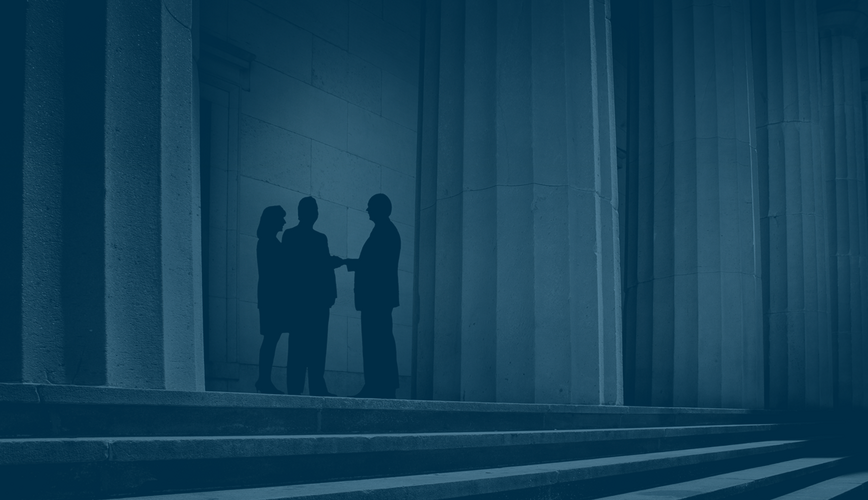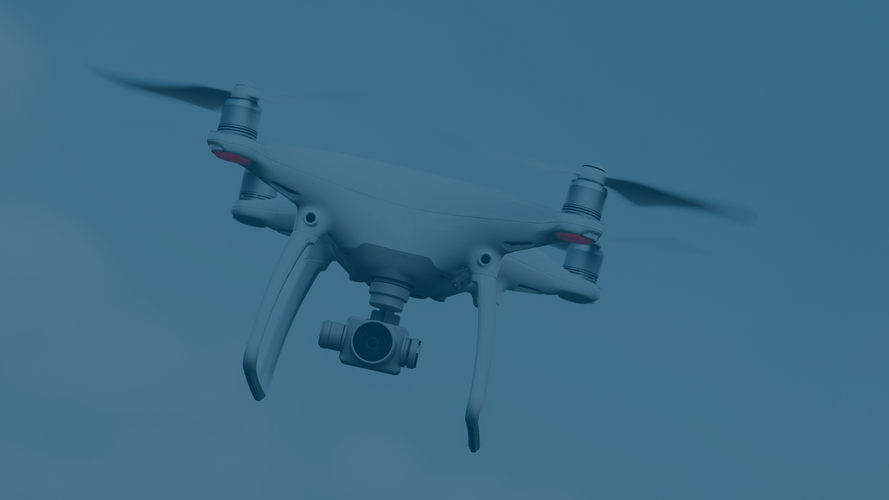Update IP, Media & Technology No. 102
Mercedes-Benz: Use of third-party license plates for advertising purposes permissible under certain circumstances
The most recent decision of the BGH (BGH, judgment of 16.05.2024 - I ZR 45 / 23) concerns photographs taken by Mercedes Benz for advertising purposes. In the foreground of the images, a vehicle model of the Mercedes-Benz S-Class can be seen. The plaintiff's corporate jet can be seen in the background.
The plaintiff operates under the name KUM and, as the owner of the jet, has had an individual aircraft registration number, which reads "D-CKUM", affixed to the rear of the jet. Pursuant to Section 19 (1) in conjunction with Annex 1 Section II No. 1 of the German Air Traffic Licensing Regulations (LuftVZO), the first letter (here: "D") indicates that the aircraft is a German aircraft, while the other four letters result in a so-called "special marking". The first letter "C" refers to the weight of the aircraft, the other three letters were freely chosen by the plaintiff. According to the plaintiff's submission, the abbreviation "KUM" is derived from the initials of the company's managing director. The aircraft registration number "D-CKUM" was recognizable on the photographs taken by Mercedes-Benz. The plaintiff did not give its consent to Mercedes-Benz in this regard.
The plaintiff objected to the use of the photographs for advertising purposes, stating that this was an unlawful exploitation of its name, as the aircraft and the associated special marking were recognizable in the advertising photographs.
Accordingly, the plaintiff brought an action after an unsuccessful warning. In the alternative, the plaintiff relied on copyright, as the photographs taken by Mercedes-Benz also show the plaintiff's copyrighted coat of arms, which is located on the left side of the jet.
The Regional Court dismissed the action, whereas the Court of Appeal, on appeal by the plaintiff, ordered the defendant to cease and desist.
On the defendant's appeal, the judgment of the 4th Civil Senate of the Higher Regional Court of Hamm dated March 30, 2023 is now set aside.
The decision
- General personality rights/general corporate personality rights
Contrary to the opinion of the court of appeal (OLG Hamm, judgment of 30.03.2023 - 4 U 130 / 21), the BGH declares that the defendant had not interfered with the plaintiff's general corporate personality right.
However, the BGH agrees with the OLG Hamm in principle to the effect that the use of a legal entity's name without the corresponding authorization could constitute an encroachment on the property elements of the general corporate personality right, more precisely the right to one's own name.
The general right of personality pursuant to Section 823 (1) BGB does not only provide protection of one's own name for natural persons, but also includes legal persons in accordance with Article 19 (3) GG as well as partnerships under commercial law in the scope of personal protection. Furthermore, the BGH states that the use of one's own name or the use of company components for advertising purposes in public is a valuable part of the personal rights of both legal entities and partnerships under commercial law
- Standard for the assessment as an infringement
The extent to which the personal rights of a third party have actually been infringed by the use of identifying features is determined in particular by whether a not insignificant proportion of the public affected or addressed assumes that commercial use has taken place. The same standard is to be applied when it comes to assessing whether a personality trait has been used at all.
Against this background, the BGH clarified in the present case that the use of the advertising photos by the defendant did not lead to a use of the plaintiff's name in the above sense. Therefore, there was also no infringement of the general right of corporate personality.
The Court of Appeal had wrongly assumed that it was sufficient for an infringement of the general right of corporate personality if the plaintiff could be identified as the owner of the aircraft recognizable in the advertising photos with the help of an internet search carried out by interested parties. However, this was not the case. Rather, the BGH makes it clear that the advertising photos would convey a clear focus on the advertised S-Class car model and that, accordingly, the car is formative for the memories of the target audience, but not the aircraft.
It should also be emphasized that the BGH also recognized it as harmless if the aircraft in the advertising photos did not merely represent a meaningless background. It was nevertheless recognizable that the focus of the advertising was on the S-Class car model, which is why the mere recognizability of the aircraft or the aircraft registration plate could not justify an infringement of the general corporate personality right. This is because it is particularly unlikely that the advertising photos would have given the target audience sufficient reason to conduct an internet search with the aim of finding out the identity of the aircraft owner.
The BGH also stated that even if one were to assume that the plaintiff could be identified as the owner of the aircraft by means of the advertising photos used by the defendant, this could still not be equated with an infringement of the scope of protection of the general corporate personality right pursuant to Section 823 (1) BGB.
For the defendant to be liable in tort, it would have been necessary for the defendant to have used the plaintiff's name in such a way that exploitation of the plaintiff's advertising or image value would have been recognizable. This could be assumed, for example, if the name of a legal or natural person is used as a preamble to advertise a product or if the use of the name draws the public's attention to the advertised product. However, such a case could not be established here.
Furthermore, the BGH draws attention to the fact that the Court of Appeal assumed that the identity of the plaintiff could be found out by an internet search of the viewers. In this context, however, the BGH clarifies that the Court of Appeal erred in law by basing its decision on circumstances that could not be attributed to the defendant under tort law. In the case of an internet search, the viewers of the advertisement would act on their own responsibility and independently of the defendant. In this respect, there is a lack of an attribution connection under liability law, as the infringement of legal interests would only come into effect through the intervention of third parties.
- Unlawfulness of the interference
Finally, the BGH rejects the Court of Appeal's assumption that the alleged encroachment on the general right of personality assumed by the court is unlawful. The right of personality is a framework right due to its nature. This framework right lacks an absolute scope of protection, which is why a comprehensive balancing of interests is required to determine the unlawfulness of an encroachment. This must be based on a normative standard that includes the opposing interests in particular, but also takes into account the public's interest in information that is worthy of protection.
At this point, the Court of Appeal failed to apply these principles and erred in law by assuming that the unlawfulness of the alleged interference resulted from the plaintiff's lack of consent. In the opinion of the Court of Appeal, no further grounds for justification were apparent. A balancing of interests did not take place within the scope of the Court of Appeal's examination.
In contrast, the BGH came to the conclusion that the depiction of the aircraft in the present case was not at all suitable for interfering with the plaintiff's general right of personality. However, if this were to be assumed, the interests of both parties would still have to be weighed up comprehensively before an unlawful infringement could be assumed.
Outlook
However, this decision by the BGH does not yet mean the end of the legal dispute, as the BGH initially referred the proceedings back to the lower courts with regard to the copyright claims asserted by the plaintiff in the alternative. Further clarification is to be provided by the lower courts.




![[Translate to English:] [Translate to English:]](/fileadmin/_processed_/b/1/csm_Personen_vor_Bildschirmen_Militaer_Verteidigungssystem_iStock_erweitert_7515f53104.jpg)




![[Translate to English:] [Translate to English:]](/fileadmin/_processed_/d/3/csm_Daten_personenbezogen_Gesichtserkennung_iStock_erweitert_9cd904bfb8.jpg)

